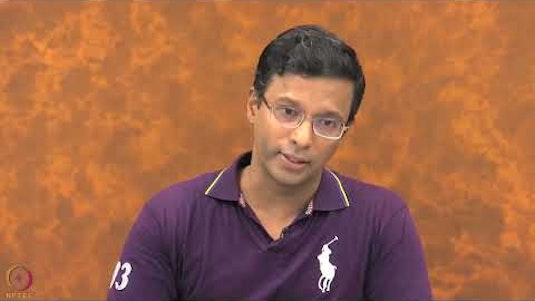
Description
Fourier Analysis continues to be an active area of research in Mathematics with numerous applications in the field of both pure and applied mathematics. The principles of Fourier analysis are applied in diverse areas of physics and engineering such as celestial mechanics, wave propagation, image processing and modulation problems to name a few. Thus Fourier analysis forms an essential component in the tool-kit of scientists and engineers. In this course we shall focus on the basic theoretical aspects of the subjects relegating computational issues to exercises. The latter are adequately covered in most standard curricula while issues of convergence are seldom addressed. Here we shall prove rigorously some of the basic theoretical results that are accessible with a rudimentary knowledge of mathematical analysis and linear algebra. The novel feature of the course is the type of applications presented coming from diverse areas of mathematics. We shall look at three applications namely the isoperimetric theorem in geometry, a problem in celestial mechanics namely, the inverting of the Kepler's equation in planetary orbit theory. The third application is a proof of Weyl's equi-distribution theory that is of immense use in number theory. We shall also derive the transformation formula for the Jacobi theta function which is another "avataar" of the famous functional equation of Riemann for the function bearing his name. It must be mentioned here that one of the most celebrated open problems today in mathematics concerns the zeta function of Riemann. We shall be looking closely at the Fourier transform proving its basic properties and its applications to differential equations. We shall derive an integral form for the solution of Airy's equation which plays an important role in optics. For problems involving radial symmetry the Fourier transform of radial functions come into play. The transform then reduces to a one variable Bessel transform. We shall end the course by proving an important formula on Fourier transform of the square of the absolute value of the gamma function along vertical lines in the right half plane. This formula was originally obtained by Srinivasa Ramanujan but we shall provide here an alternate proof via Fourier analysis.
Tags
Syllabus
COURSE LAYOUT
The course will broadly be in two parts: Fourier series and Fourier Transforms.consist of the following modules:
1) Basic convergence theorem of Fourier series and its applications
2) Mean convergence
3) Cesaro Summability - Fejer's theorem and its applications.
4) The space S of rapidly decreasing functions
5) Fourier transform as an operator from S to S and the Plancherel's theorem
6) Sturm-Liouville problems and its applications
7) Application to PDEs.

Fourier Analysis and its applications
-
TypeOnline Courses
-
ProviderSwayam
COURSE LAYOUT
The course will broadly be in two parts: Fourier series and Fourier Transforms.consist of the following modules:
1) Basic convergence theorem of Fourier series and its applications
2) Mean convergence
3) Cesaro Summability - Fejer's theorem and its applications.
4) The space S of rapidly decreasing functions
5) Fourier transform as an operator from S to S and the Plancherel's theorem
6) Sturm-Liouville problems and its applications
7) Application to PDEs.
Tags
Related Courses


Wiskunde voor (startende) studenten

Computational Mathematics with SageMath

Elementary Thermodynamics for All

Neuronales Netz von Scratch

NES Essential Academic Skills Mathematics Subtest 3 (003): Practice & Study Guide

College Algebra

MoGEA: Practice and Test Prep

Math Flashcards

VITEEE: Exam Prep & Syllabus

Study.com ACT® Test Prep: Practice & Study Guide


 Online Courses
Online Courses  Swayam
Swayam
